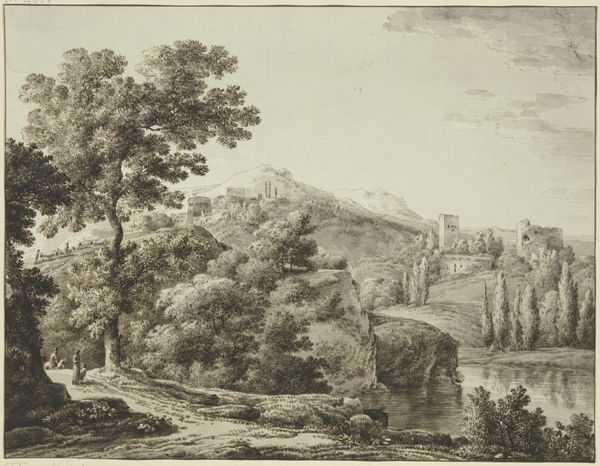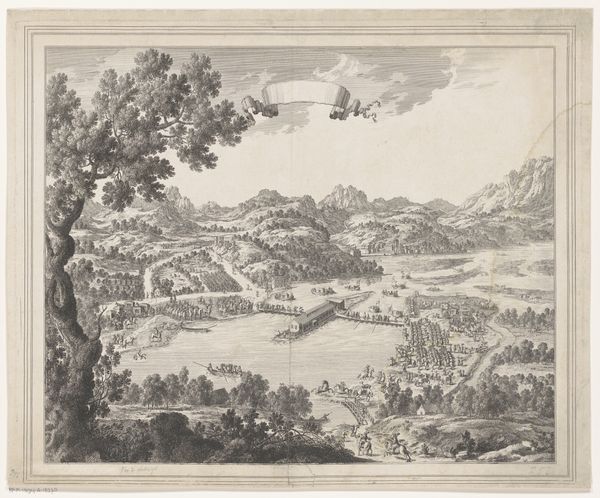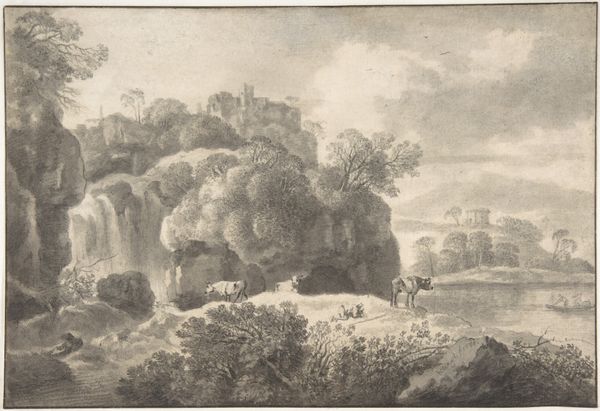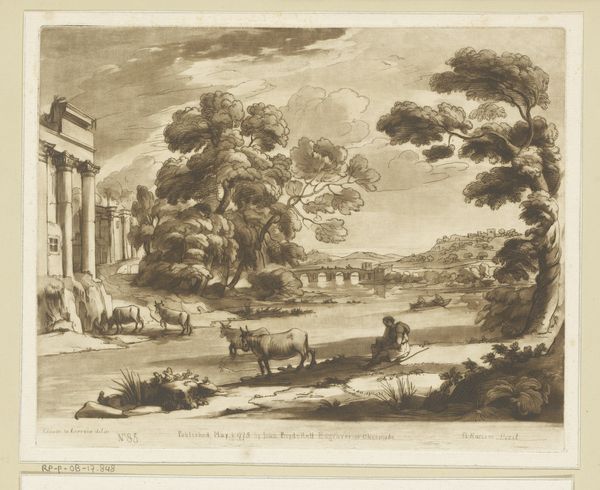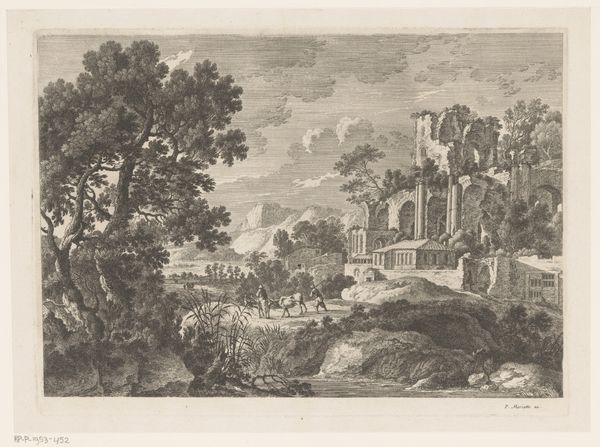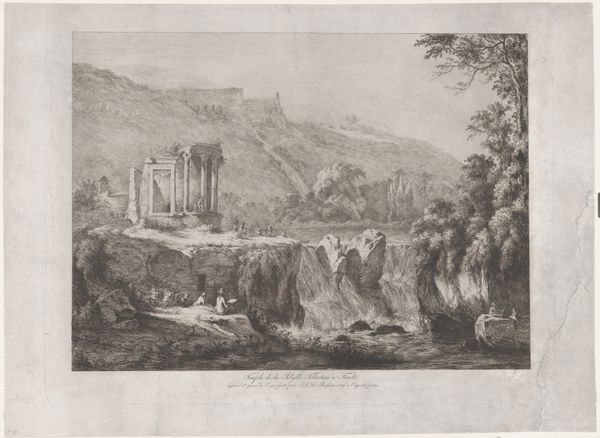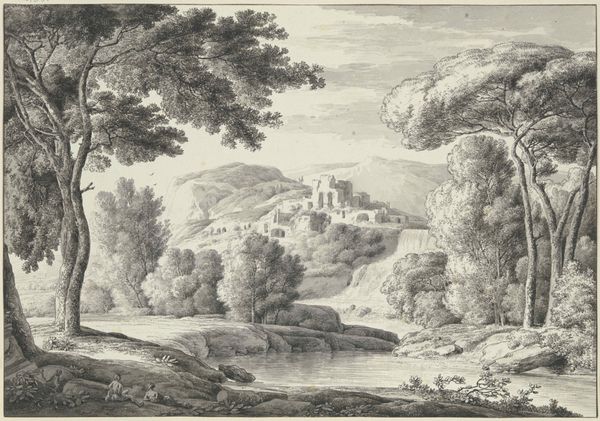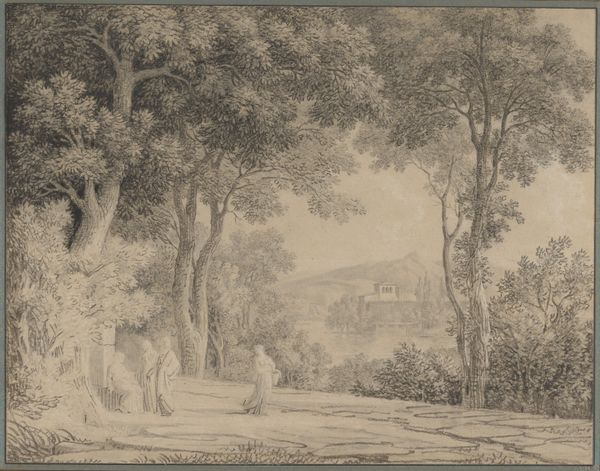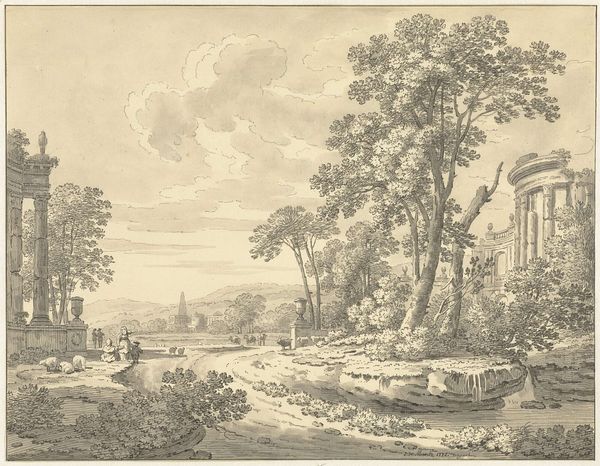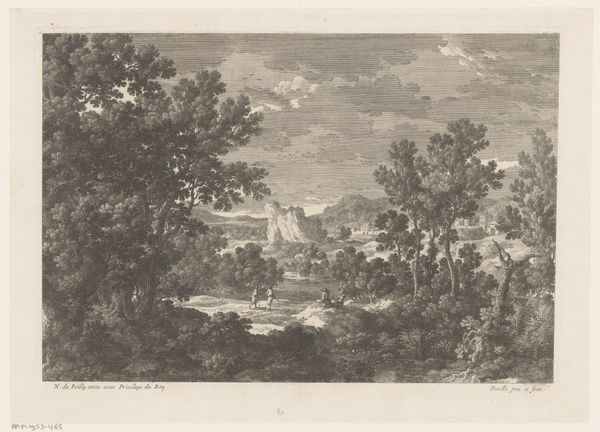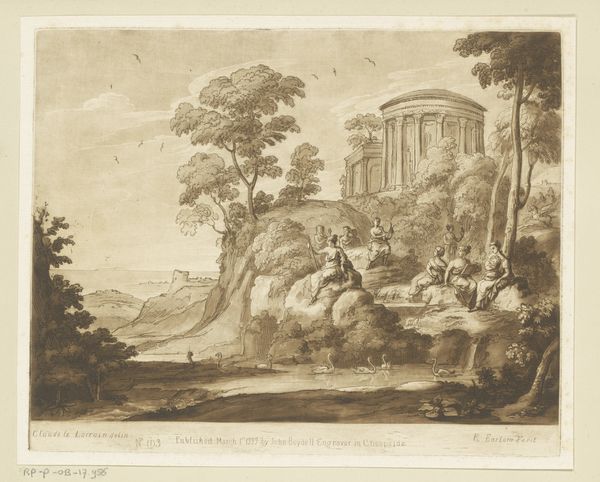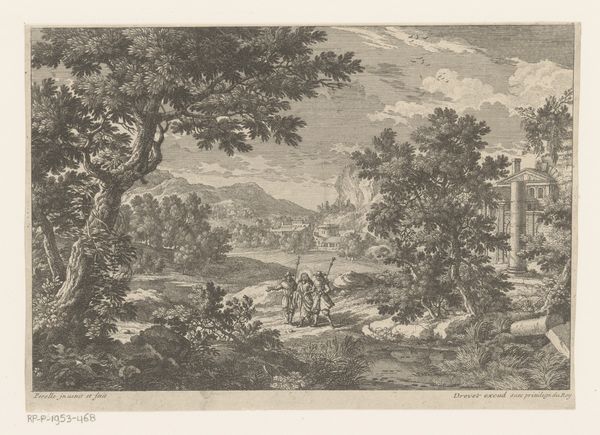
drawing, tempera, pencil
#
drawing
#
neoclacissism
#
tempera
#
landscape
#
classical-realism
#
etching
#
pencil drawing
#
pencil
#
history-painting
Dimensions: overall: 39.2 x 56.5 cm (15 7/16 x 22 1/4 in.)
Copyright: National Gallery of Art: CC0 1.0
Curator: Here we have Christoph Heinrich Kniep's "Arcadian Landscape with a Doric Temple," circa 1790s. It’s rendered with pencil and tempera on paper. What's your take? Editor: It feels so…dreamy. Like a sepia-toned memory. The air is still, and you can almost hear the gentle lapping of the water. Is that what Arcadia is supposed to evoke, this sense of peaceful contemplation? Curator: Indeed. The composition is deliberately structured to achieve that effect. Note the placement of the temple, how it commands attention, yet it is softened by the surrounding natural forms. The tree on the left acts as a repoussoir, drawing the eye into the scene. The artist juxtaposes built structures with raw, somewhat exaggerated nature. Editor: I see it. It’s as if Kniep's trying to tame nature with a Doric statement while letting a wild side of it burst through with exaggerated vegetation. The people there seem a bit indifferent. Are they tourists? Or deities having a picnic? Curator: Likely figures representing an idealized past, inhabiting this classical vision. Their presence completes the harmonious blend of humanity and nature. Kniep seems to engage the Neoclassical interest in antiquity by integrating both landscape and figures into a cohesive vision of the past. Editor: Hmm, so, in other words, it’s less about reality and more about constructing an idea, an ideal. The muted palette works well here, creating a sense of distance, both temporal and emotional. You almost feel like you're observing a stage set, perfectly arranged. Curator: Precisely. It presents a highly mediated, idealized version of reality. But also consider the delicate application of the media. The hatching and stippling of the pencil work to construct depth and shadow. Editor: Right, the closer you look, the more detailed it is! So Kniep blends nature and structure, man and art. You know, I get it now. He wasn’t just painting a landscape. It’s like a meditation. It brings to mind my memories. Curator: Yes. It is an intriguing reflection on the aesthetics and philosophical ideals of its time. Editor: Exactly. Art, beauty, thought…and picnics, apparently. It’s something to be held in mind. Thanks!
Comments
No comments
Be the first to comment and join the conversation on the ultimate creative platform.

